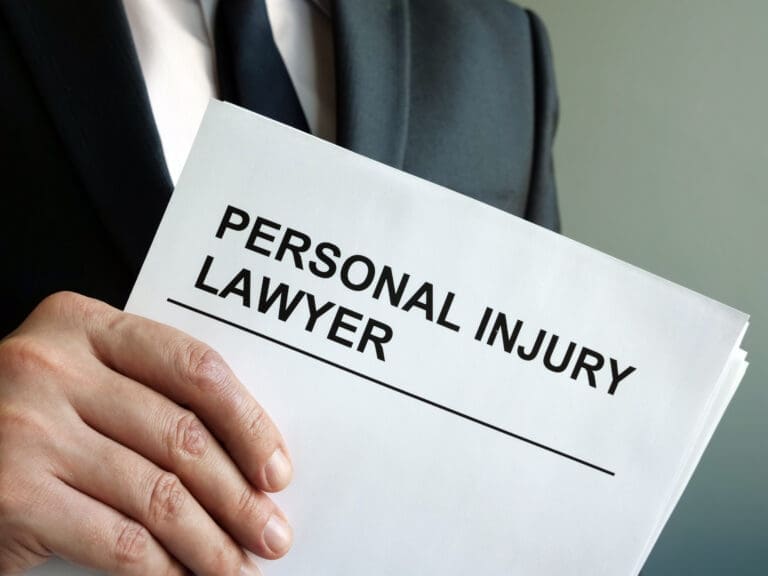
The integrity of the cadena de custodia stands as a foundational pillar in the American legal system, particularly in criminal proceedings where the stakes are high and the burden of proof rests squarely on the prosecution. When evidence is introduced in court, its journey from collection to courtroom must be meticulously documented and safeguarded at every turn. Any deviation, mishandling, or procedural lapse—collectively known as chain of custody errors—can have profound consequences, often leading to the exclusion of contaminated evidence and, in some cases, the unraveling of entire prosecutions.
En esencia, el cadena de custodia refers to the chronological documentation and secure handling of evidence. Every individual who comes into contact with a piece of evidence must record their involvement, detailing the time, place, and purpose of each transfer. This rigorous protocol is designed to ensure that the evidence remains unaltered, untampered, and authentic from the moment of collection to its presentation in court. The rationale is simple: evidence that cannot be reliably traced or authenticated cannot be trusted to tell the truth of the matter asserted.
Chain of custody errors can manifest in myriad ways. Commonly, these include mislabeling evidence, incomplete or inconsistent documentation, improper storage that leads to contamination, or outright loss of the evidence itself. Forensic evidence, such as DNA or trace materials, is particularly vulnerable to contamination, both from environmental factors and human error. Even a minor oversight—like failing to wear gloves or neglecting to seal a container—can introduce doubt about the evidence’s integrity. In the digital realm, the challenges multiply, as electronic data can be altered or accessed without proper logging, and the tools for ensuring authenticity must adapt to evolving technology.
When such errors occur, the consequences are not merely procedural—they strike at the heart of due process and the presumption of innocence. The defense is empowered to challenge the admissibility of compromised evidence, often through a motion to suppress. If the court finds that the chain of custody has been broken or that the evidence has been contaminated, it may rule the evidence inadmissible. The prosecution, deprived of key evidence, may find its case significantly weakened, potentially resulting in reduced charges, acquittals, or even the dismissal of the case altogether.
This process is not merely a technicality; it is a safeguard against wrongful convictions and prosecutorial overreach. The Federal Rules of Evidence, particularly Rules 901 and 902, require that evidence be authenticated as a condition precedent to admissibility. Rule 403 further empowers judges to exclude evidence if its probative value is substantially outweighed by the risk of unfair prejudice, confusion, or waste of time. These rules collectively ensure that only reliable, credible evidence is weighed by the jury, preserving the fairness of the trial.
Yet, the burden of establishing a break in the chain of custody rests with the defense. Courts have consistently held that mere speculation or the possibility of tampering is insufficient; there must be concrete evidence of a procedural lapse or contamination. This standard, while high, is essential to prevent frivolous challenges and to maintain judicial efficiency. However, when genuine errors are uncovered, the courts have not hesitated to act decisively, recognizing that the integrity of the legal process demands nothing less.
In recent years, the rise of digital evidence has introduced new complexities. The collection, storage, and authentication of electronic data require specialized protocols, and the risk of undetected tampering is ever-present. Technologies such as blockchain and semantic web frameworks are being explored to provide tamper-proof records and enhance the reliability of digital evidence. These innovations reflect a broader trend toward leveraging technology to bolster the integrity of the chain of custody, a necessity in an era where data can be manipulated with unprecedented ease.
The exclusion of contaminated evidence is not merely a procedural remedy; it is a reflection of the conservative principle that the ends do not justify the means. The rule of law demands that convictions rest on untainted, credible evidence, not on shortcuts or procedural shortcuts. This perspective, rooted in a respect for individual rights and the limitations of government power, underscores the importance of maintaining rigorous standards in evidence handling.
From a broader legal standpoint, chain of custody errors and the exclusion of contaminated evidence serve as a check on the power of the state. They reinforce the notion that the government bears the burden of proof and must adhere to the highest standards of fairness and integrity. This principle is especially salient in criminal cases, where the consequences of error can be life-altering. By insisting on strict adherence to chain of custody protocols, the courts affirm the fundamental rights of the accused and uphold the legitimacy of the judicial process.
The implications extend beyond individual cases. Public confidence in the justice system hinges on the belief that trials are fair and that verdicts are based on reliable evidence. High-profile cases involving chain of custody errors or evidence contamination can erode trust in law enforcement and the courts, fueling skepticism and calls for reform. Conversely, a robust commitment to evidence integrity reassures the public that justice is not only done but is seen to be done.
En el contexto de trending legal topics, the intersection of technology and evidence handling is drawing increasing attention. The proliferation of body cameras, surveillance footage, and digital communications has expanded the universe of potential evidence, while also raising new questions about privacy, data security, and the potential for manipulation. Courts and legislatures are grappling with how to adapt traditional chain of custody principles to these new realities, seeking to balance the need for effective law enforcement with the imperative of safeguarding individual rights.
Moreover, the conservative legal movement has consistently emphasized the importance of procedural safeguards and the dangers of government overreach. Chain of custody requirements exemplify this philosophy, serving as a bulwark against the misuse of state power and the erosion of constitutional protections. By insisting that evidence be handled with the utmost care and transparency, the legal system reaffirms its commitment to the rule of law and the presumption of innocence.
In civil cases, the importance of chain of custody is no less significant. Disputes over the authenticity of documents, digital records, or physical evidence can determine the outcome of lawsuits involving millions of dollars or matters of public policy. The principles are the same: evidence must be traceable, authentic, and free from reasonable doubt as to its integrity. Parties who fail to maintain proper chain of custody risk having their evidence excluded, with potentially devastating consequences for their case.
The practical challenges of maintaining an unbroken chain of custody are considerable. Law enforcement agencies, forensic laboratories, and legal professionals must implement rigorous training, standardized protocols, and regular audits to minimize the risk of error. The use of barcodes, electronic tracking systems, and secure storage facilities are now standard practice in many jurisdictions. In high-stakes cases, third-party experts may be retained to oversee evidence handling and provide independent verification of chain of custody procedures.
Despite these safeguards, errors still occur. Human fallibility, resource constraints, and the pressures of high-profile investigations can lead to lapses in judgment or protocol. When these errors come to light, the legal system must respond with transparency and accountability, recognizing that the exclusion of contaminated evidence is not a failure but a vindication of the system’s commitment to fairness.
For defense attorneys, challenging the chain of custody is a critical strategy, particularly when the prosecution’s case relies heavily on forensic or physical evidence. By scrutinizing every link in the chain, from the initial collection to the final presentation in court, the defense can uncover weaknesses that may cast doubt on the reliability of the evidence. Expert testimony, cross-examination of law enforcement officers, and detailed analysis of documentation are all tools in the defense arsenal.
For prosecutors, the imperative is clear: ensure that every step in the evidence handling process is documented, secure, and above reproach. The consequences of a chain of custody error can be severe, not only in terms of lost convictions but also in damage to professional reputations and public trust. Prosecutors must work closely with law enforcement and forensic experts to maintain the highest standards of evidence integrity.
En resumen, chain of custody errors and the exclusion of contaminated evidence are not mere technicalities—they are essential safeguards that preserve the integrity of the legal process, protect individual rights, and ensure that justice is served. The conservative emphasis on procedural rigor and the rule of law finds its fullest expression in these principles, which demand accountability, transparency, and respect for the rights of the accused. As technology evolves and the challenges of evidence handling grow more complex, the legal system must remain vigilant, adapting its protocols and standards to meet new threats while holding fast to the enduring values that underpin American justice.
The lesson is clear: in the pursuit of justice, the means matter as much as the ends. The exclusion of contaminated evidence is not an obstacle to justice but a testament to the system’s commitment to truth, fairness, and the rule of law. By upholding the integrity of the cadena de custodia, the courts ensure that convictions are based on reliable evidence and that the rights of all parties are respected. This is not only a legal imperative but a moral one, reflecting the enduring principles that have guided the American legal tradition for generations.
Citations:
- Chain of Custody Errors Impact Evidence
- Digital Chain of Custody Guide
- Wikipedia on Clarence Thomas
- Guide to Low Competition Keywords
- Federal Rule of Evidence 403
- Cognitive 2012 Conference Paper
- South Carolina Supreme Court Case
- Chain of Custody Errors in Charges
- What is Chain of Custody
- Finding Low Competition Keywords
- TAMU Law Review Article
- Semantic Scholar on Evidence
- Impact of Broken Chain of Custody
- Chain of Custody Errors in Criminal Charges
- Authenticated Digital Evidence Guide
- Chain of Custody Errors Impact Case
- How to Find Easy Keywords
- Consequences of Broken Chain of Custody
- Anti-Contamination Measures for DNA Evidence
- Motions to Suppress Evidence
- PMC Article on Evidence Handling
- NCBI Book on Forensic Evidence
- NYT on Clarence Thomas Rulings
- Motions to Suppress Evidence
- Rethinking Chain of Custody
- Reddit Opinion on Clarence Thomas
- Best Practices for Digital Evidence
- OJP on Exclusionary Rule
- Cornell on Clarence Thomas Decisions
- Chain of Custody Errors in Criminal Cases
- Wiley Journal on Forensic Evidence
- Y Combinator News Discussion
- NIJ on Chain of Custody
- Reddit on Finding Low Competition Keywords
- How to Find Low Competition Keywords
- YouTube Video on Evidence Handling
- Guide to Low Competition Keywords
- ACM on Digital Evidence Handling
- Positional Blog on Low Competition Keywords
- Social Media Evidence Denied in Court
- CBS News on Church Shooting
- Federal Rule of Evidence 801
- SEO Clarity on Semantic Keywords
- Admissibility of Rap Lyrics as Evidence
- Cases of Mishandled Forensic Evidence
- Problems with Evidence Chain of Custody
- Case Western Faculty Publications
- Electronic Tools for Chain of Custody
- Real Cases of Forensic Fraud
- NIJ on Motions in Limine
- NIJ Taxonomy on Chain of Custody
- Chain of Custody Errors Impact Evidence
- NY Courts Evidence Authenticity Rules
- Flaws in Chain of Custody Impact
- Third Party Use Evidence Genericness








